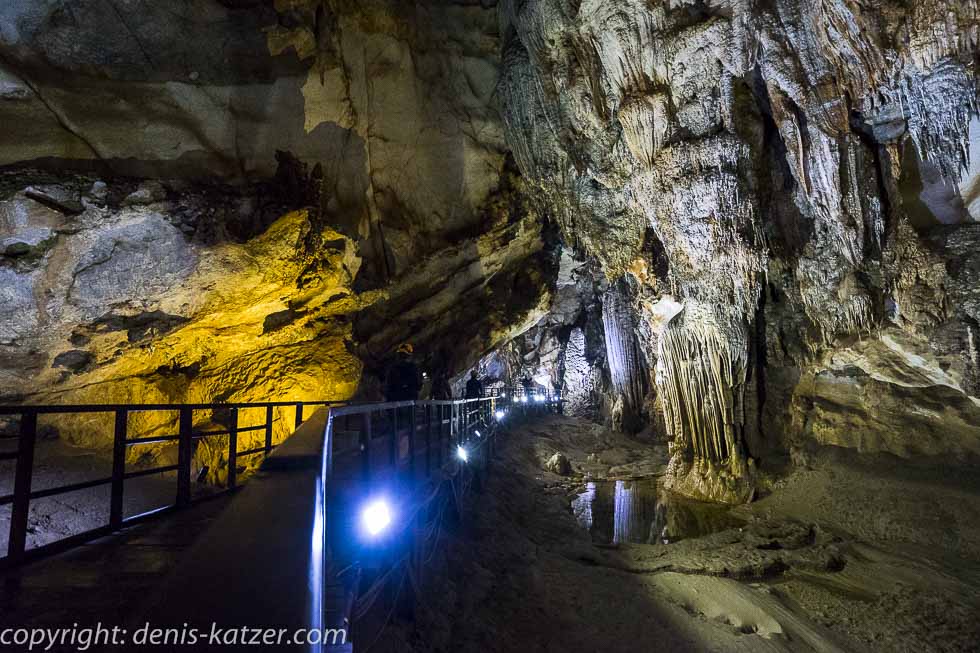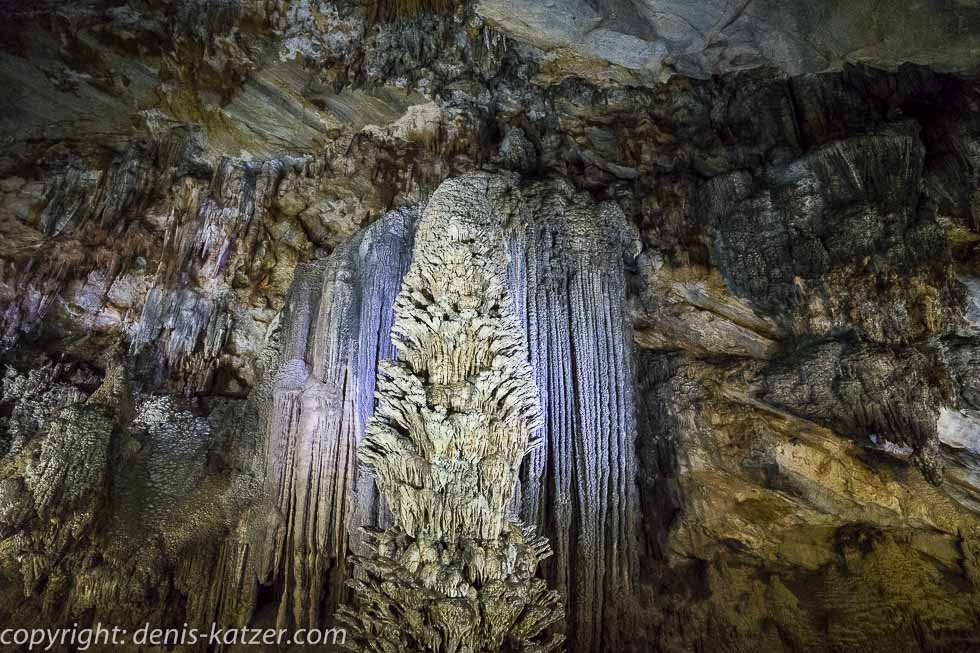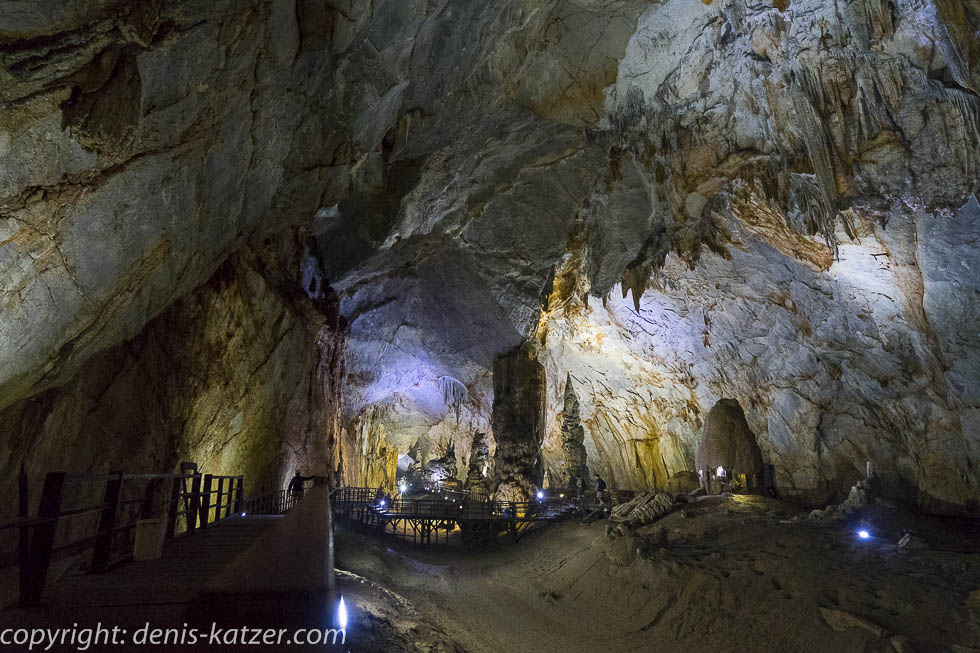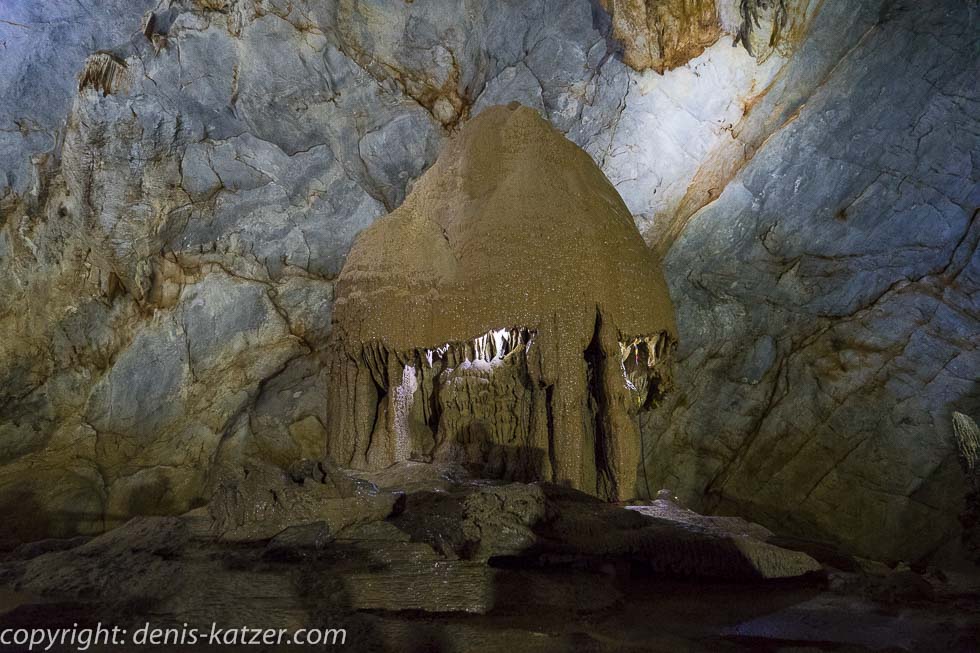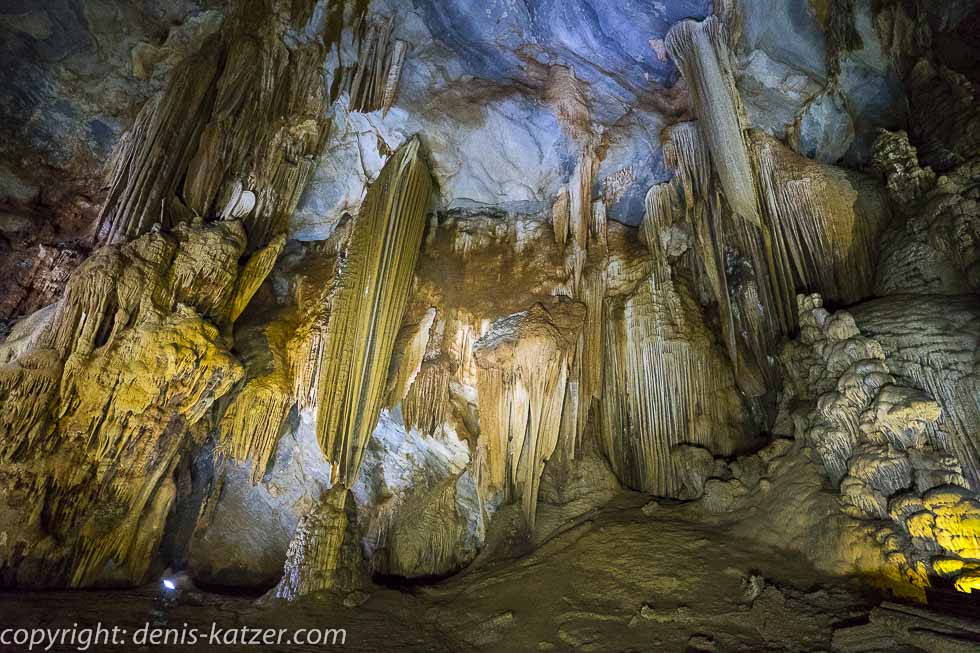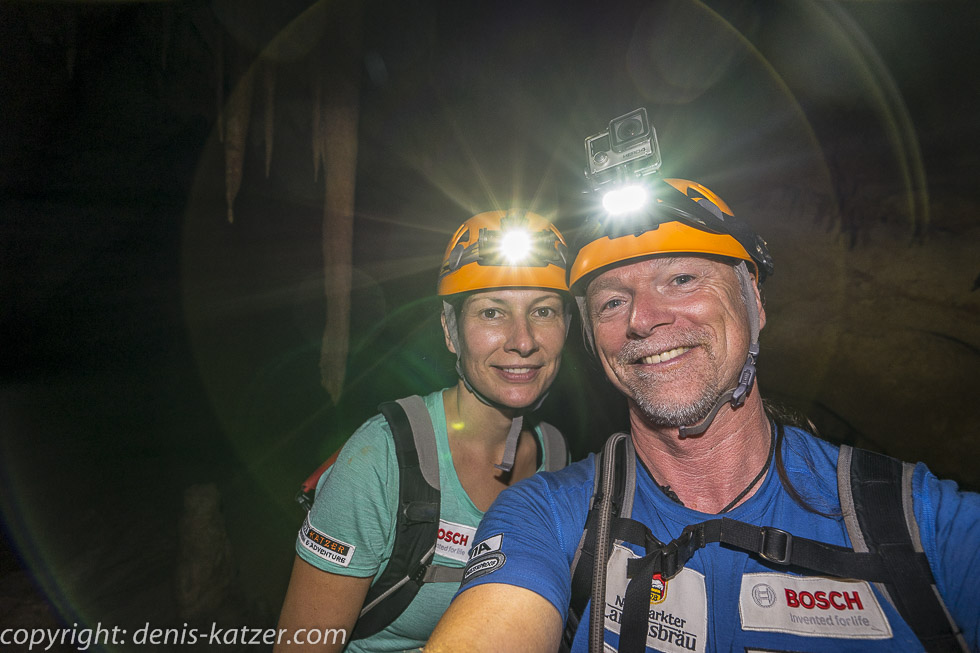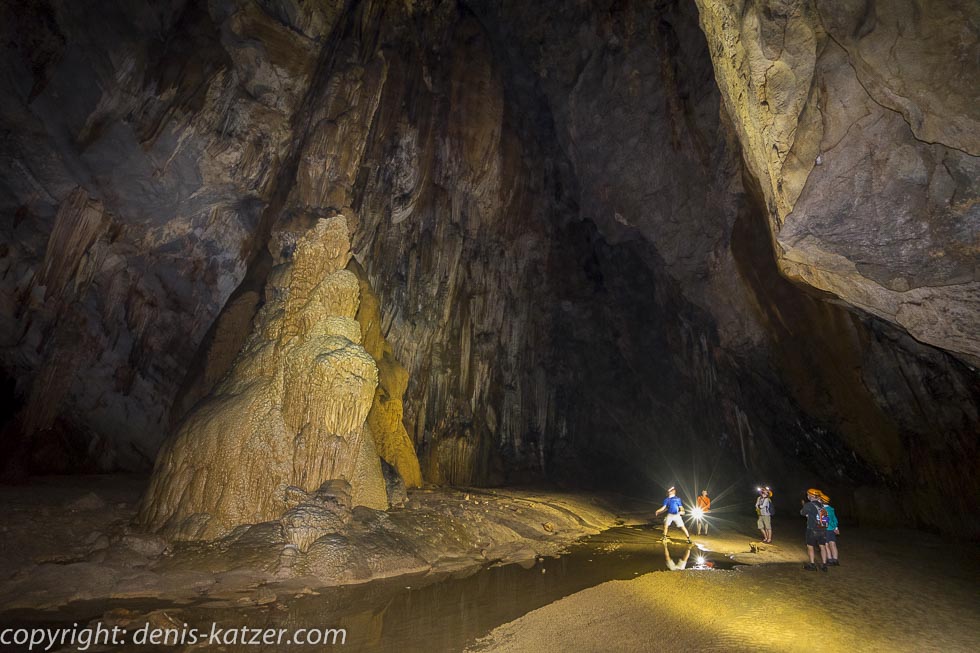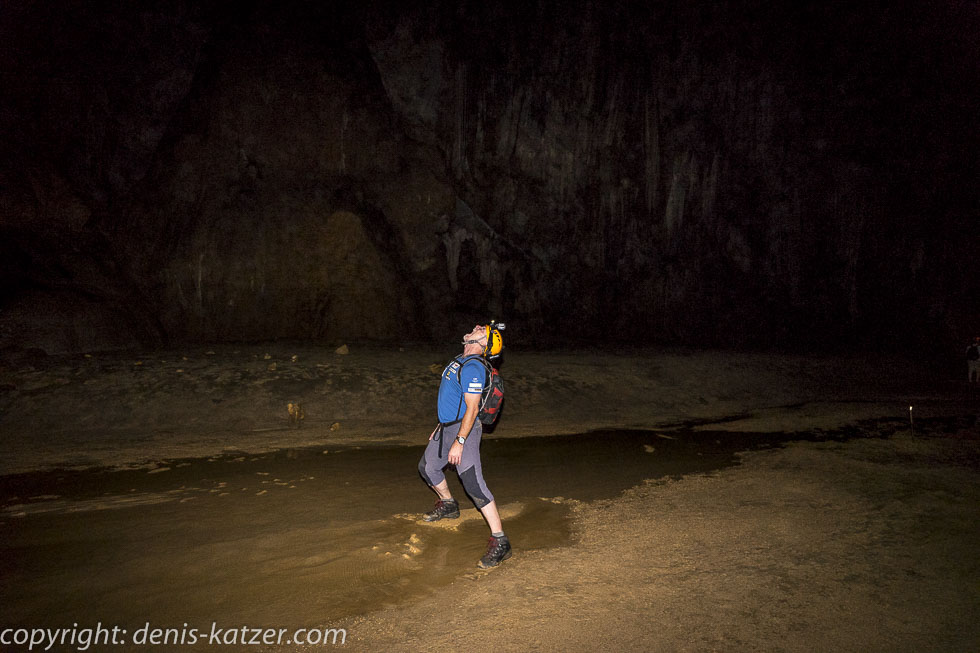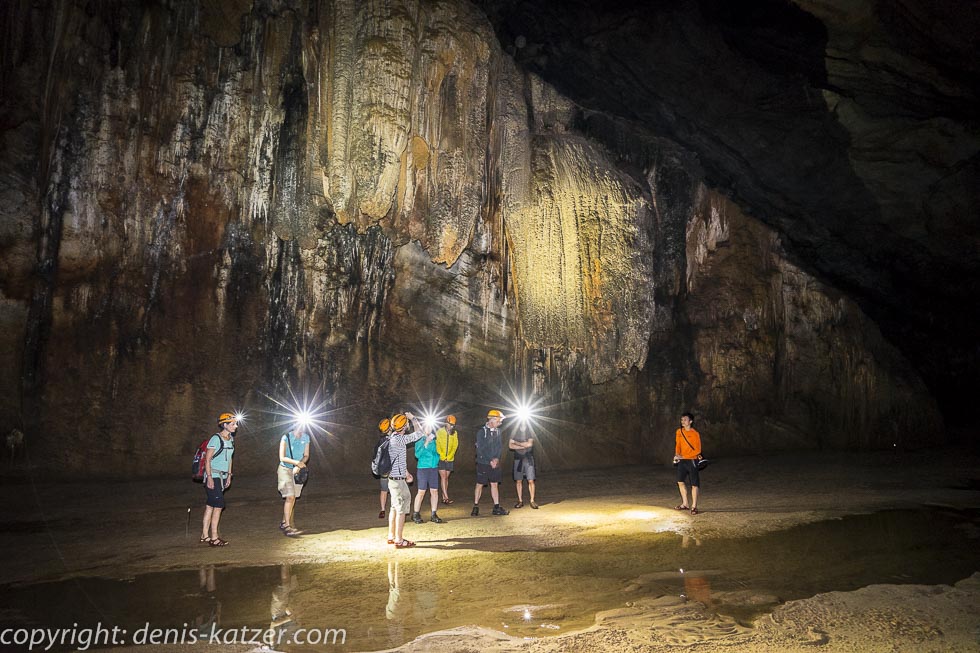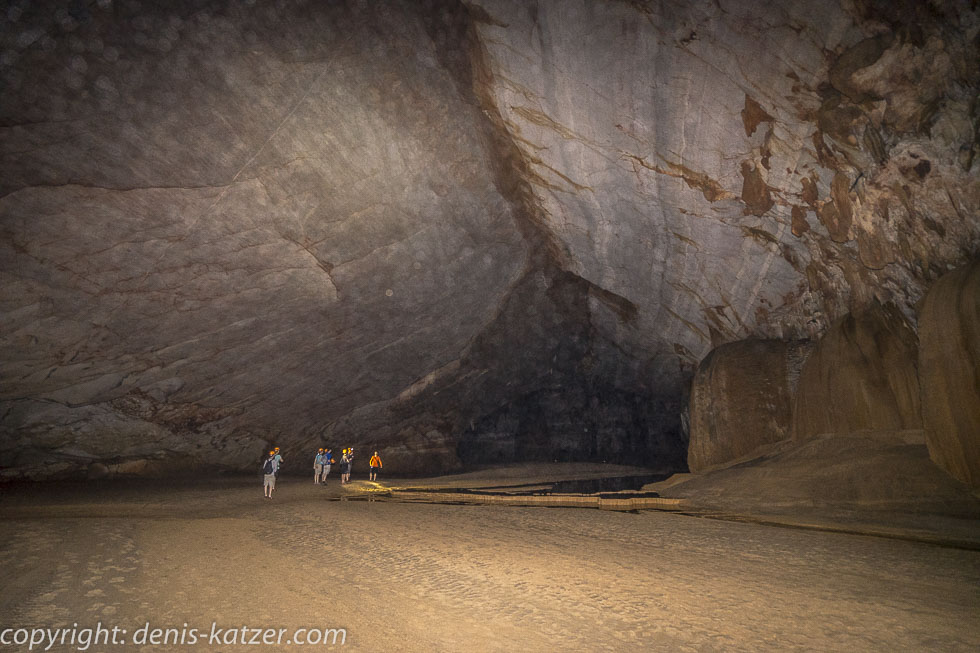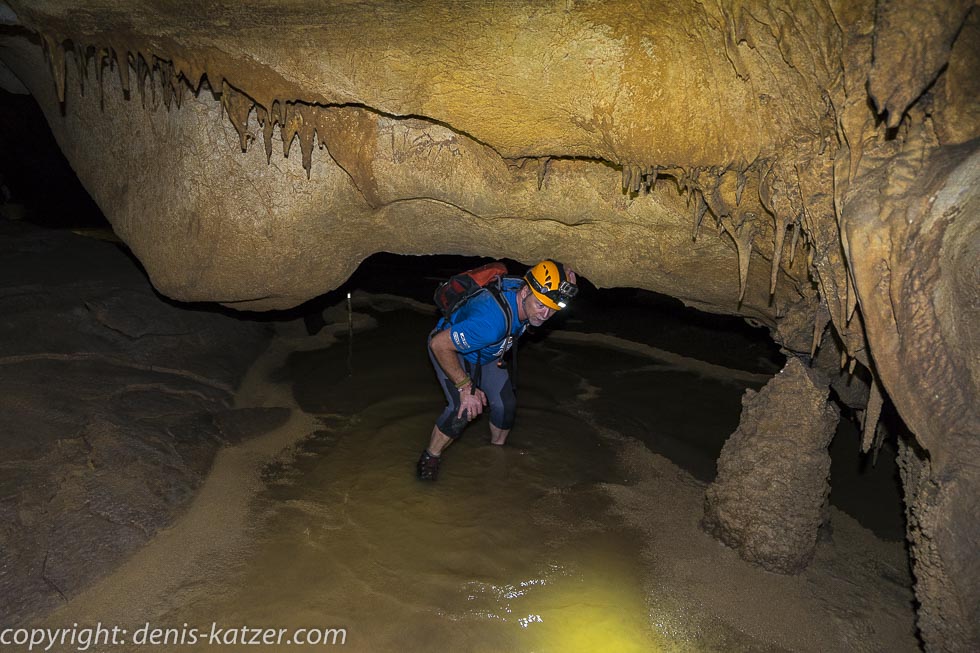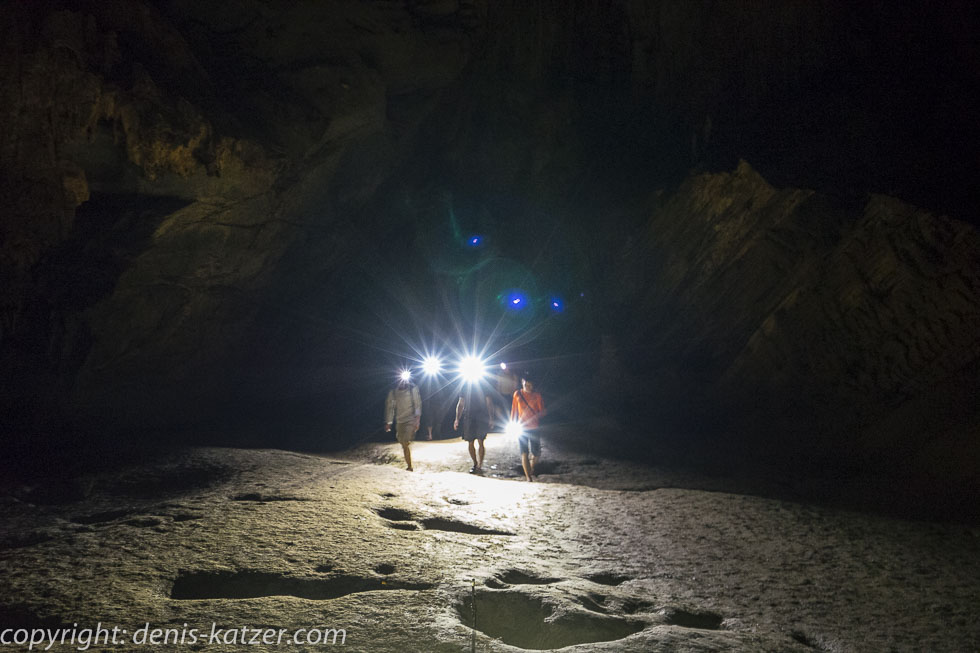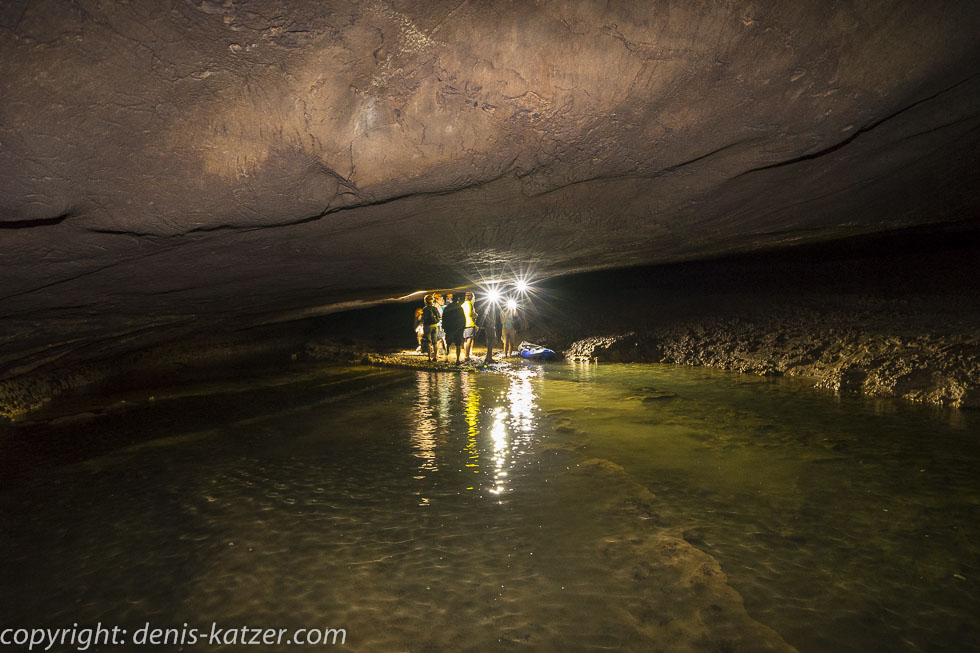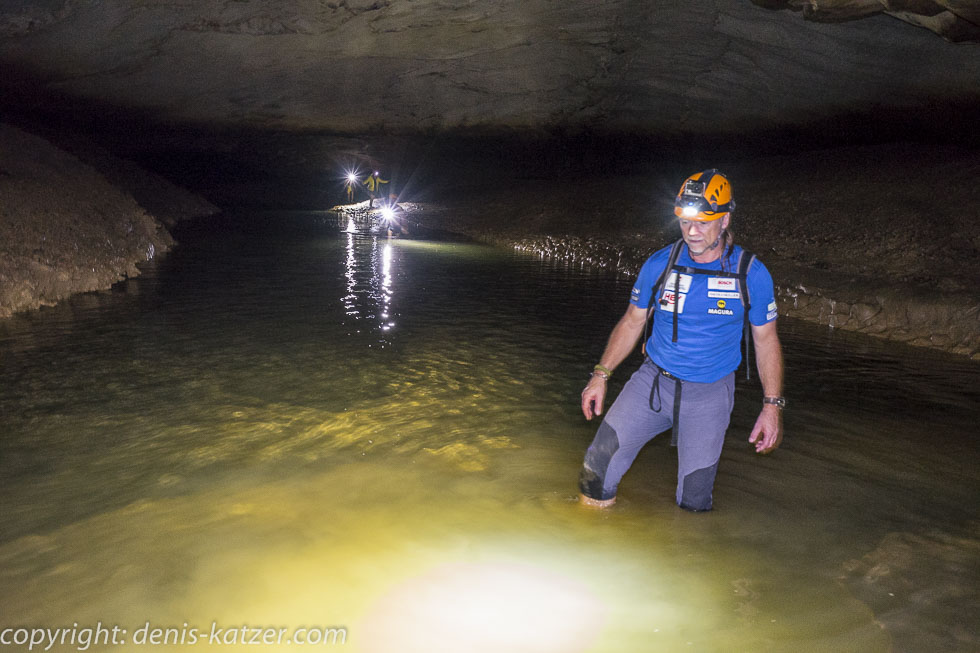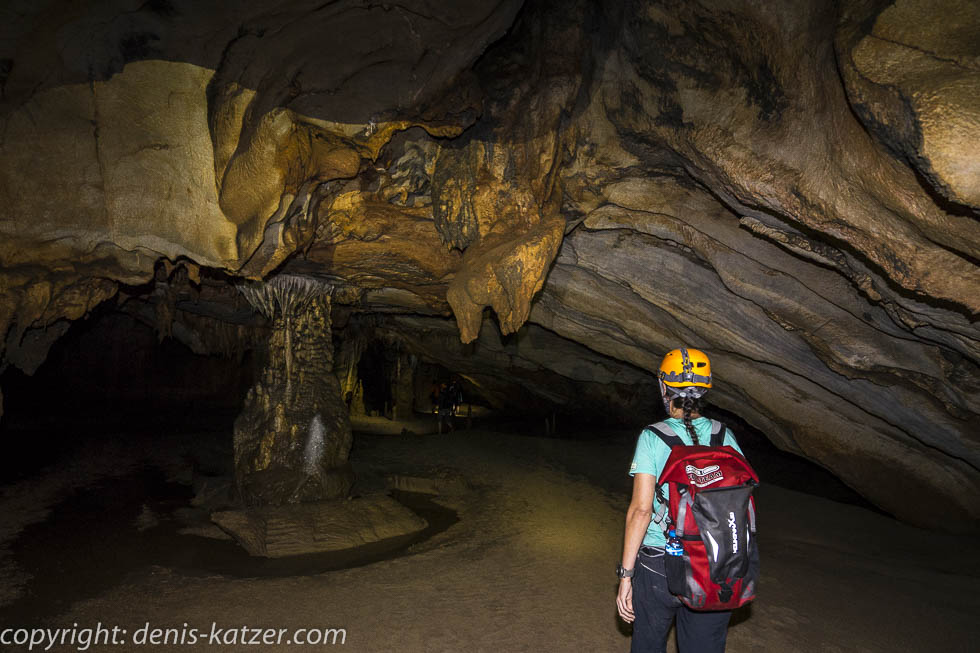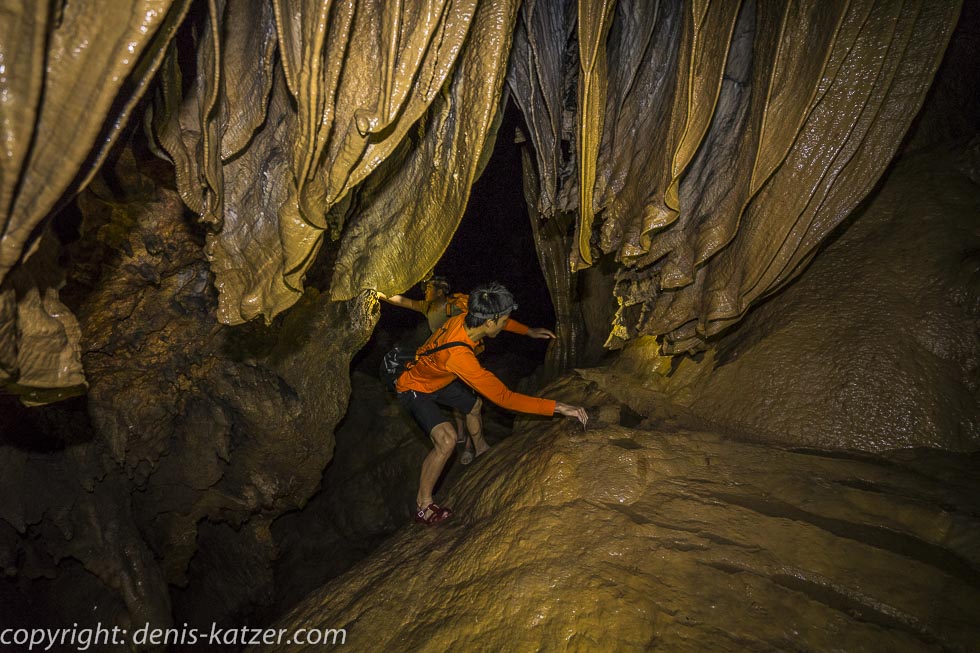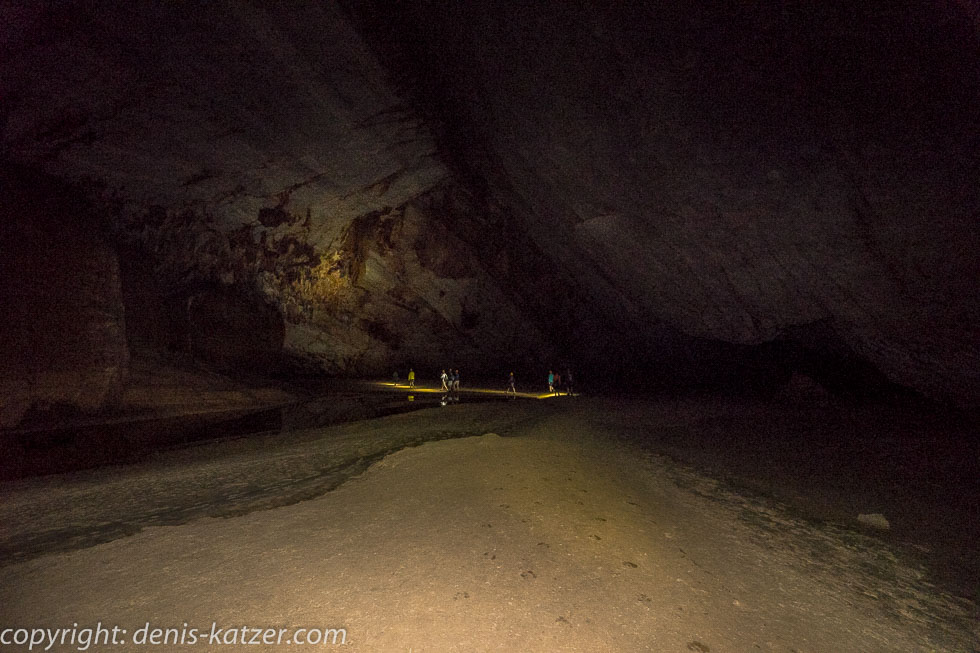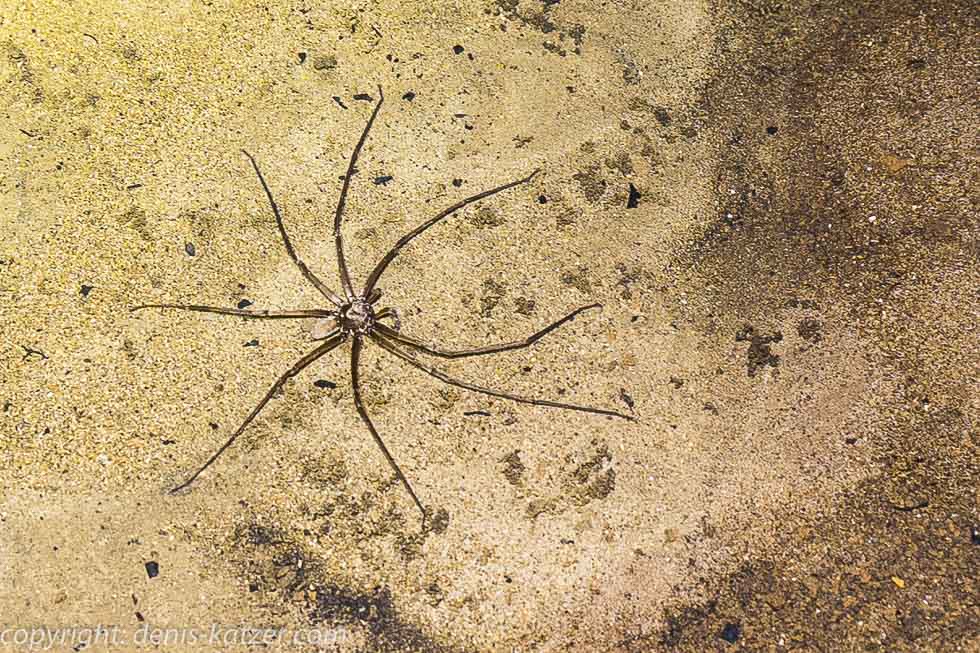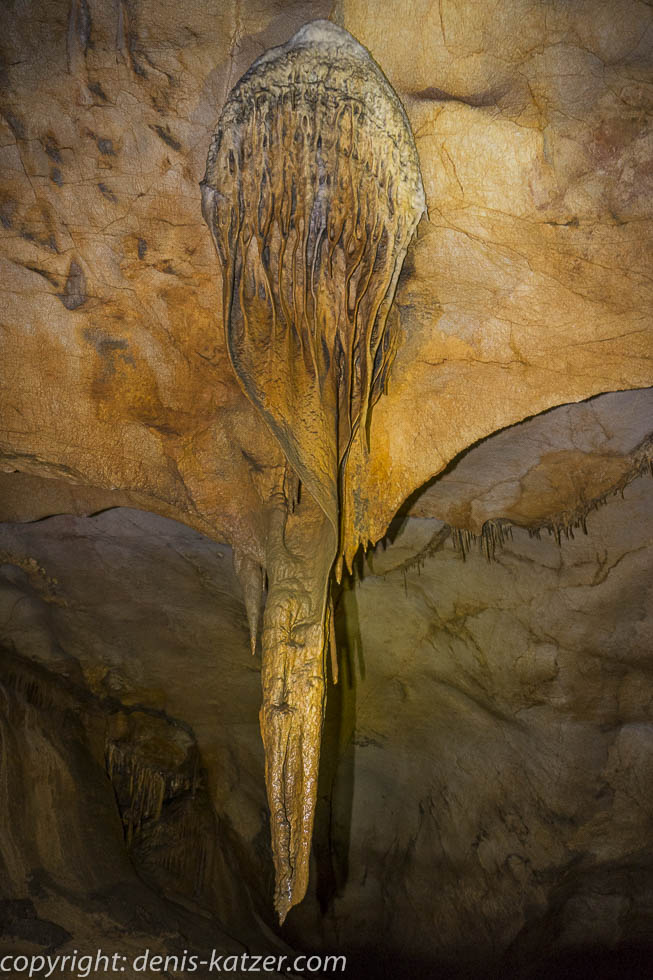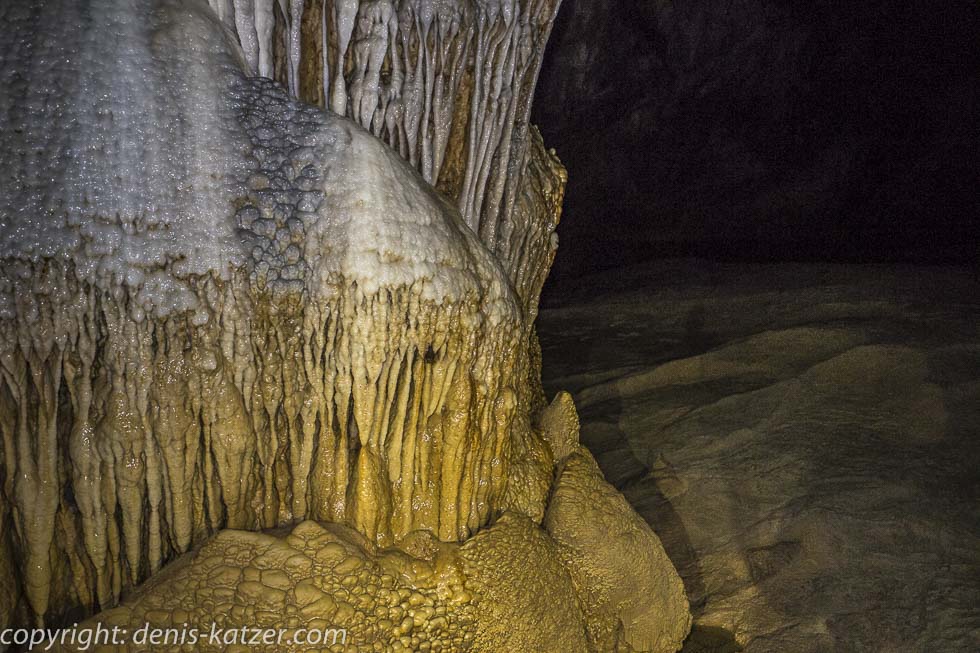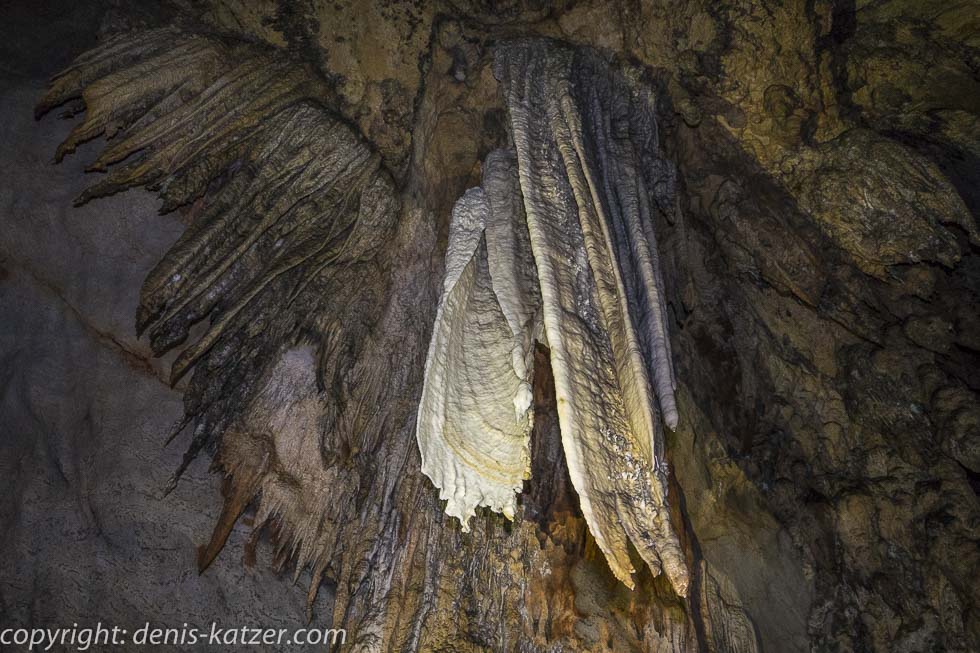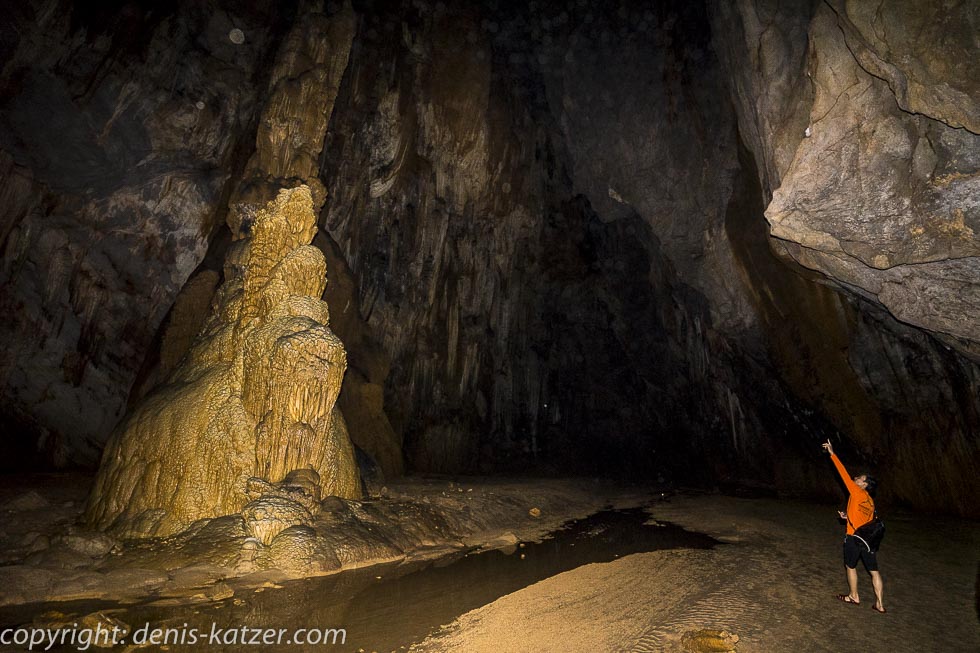
Claustrophobia in the hole – Just survived – Paradise Cave
N 17°37'04.8'' E 106°22'35.7''
Date:
13.12.2016 to 14.12.2016
Day: 532
Country:
Vietnam
Province:
Quảng Bình
Location:
Phong Nha Lake House
Latitude N:
17°37’04.8”
Longitude E:
106°22’35.7”
Daily kilometers:
80 km
Total kilometers:
21,122 km
Total altitude meters:
58.432 m
Sunrise:
06:15 am – 06:16 am
Sunset:
5:21 pm
Temperature day max:
23°C
(Photos of the diary entry can be found at the end of the text).
Monsoon rain falls on the lush green mountain forest. Dense, low-lying clouds pass overhead. Some of them seem to get stuck in the crowns of the mighty and tall trees, which is why even more water falls down. A few tropical bird calls and the roar of some monkeys drift over to us through the maze of trees. The biodiversity in Phong Nha-Ke Bang National Park is impressive with 381 vertebrates, including 59 amphibian and 72 bird species. Research teams are constantly discovering new animal species here, such as the three-horned pit viper or endemic geckos.
Surrounded by a sea of 1320 different plants and trees, most of which are alien to us, we climb the steps to the Paradise Cave. This time our group of 10 excursionists consists of a Czech, a Dutch woman, a family of four from Mexico, four Germans and the Vietnamese guide called Dong. “112 mammals live in our wonderful national park and before the cave was opened for tourism, there were tons of monkeys here, but almost all of them have now retreated,” he says with pride in his voice.
We climb through a large hole from above into the interior of the underworld palace. “Wow”, I marvel at the stunning sight of the gigantic stalactite cave, which at 31.4 kilometers is the longest dry cave discovered in Vietnam to date and probably the longest cave in Asia. We climb over wide wooden steps into the illuminated splendor and admire the stalactites and stalagmites, which seem to be even more enormous here than in Phong Nha Cave.
“It’s best if we walk quickly to the end of the area that is accessible to normal visitors. If you want to take photos, we should do that when we get back from our excursion. There won’t be any people here then,” Dong suggests, which is why we hurry past the world-class beauties first. At the end of the one kilometer long wooden walkway, a small door is opened for us. We descend the stairs and put our feet on the sandy floor of the cave. Just a few meters further on, there is no artificial lighting. Just like yesterday, we switch on our headlamps and follow their beam as it eats its way through the darkness. “Those who are brave can follow me into this hole. There are the most beautiful stalactites down there that hardly anyone has ever seen before. But it’s important that none of you suffer from claustrophobia, because it gets very narrow down there,” says Dong and climbs into the hole in the ground. Curious, I follow him until it gets so narrow that I can no longer turn in the damp, stuffy corridor. “I hope there’s a chamber down there where you can turn around?” I ask, feeling a little uncomfortable now. “Yes, yes, there’s a big grotto coming,” Dong replies euphorically. Behind me, I can hear other participants on our excursion sliding through the small clay pipe. If someone gets claustrophobic and wants to go back in panic, that would be impossible now. “Where are you taking us?” I ask, trying to sound positive. “Shh,” Dong puts his index finger to his lips as the corridor ends in a small hollow in the ground. “It’s beautiful here! So beautiful! Simply wonderful!” he shouts to lure even more of the participants into the stuffy hole. In fact, six of us are now sitting huddled together in an oppressive cavity about four meters deep, laughing at Dong’s joke. Close above us is the loamy, cracked and damp ceiling. If a chunk breaks off here, we’ll all die together, I think, and I notice how my pulse rate increases. Let’s get out of here, flashes a thought, but the corridor is blocked by the two Mexicans who are just trying to turn around to leave the tube. “Shall I come down too?” Tanja calls downstairs. “Stay outside. That was a joke from Dong. I’ll be glad when I’m back upstairs,” I reply. Because I get the feeling that the reddish-brown walls are pulsating towards us, suffocating us all, I look down at the floor and force myself to breathe calmly. Is this the beginning of claustrophobia? “Let’s go back upstairs,” I say as calmly as possible. The Mexicans, meanwhile, have managed to turn their bodies and crawl upwards like worms. The Dutch woman and the German follow them. As I was the second to crawl into the stupid hole, I am now the penultimate to leave it. When I reach the top, I exhale with relief. “I don’t think I’m cut out to be a speleologist,” I say to Tanja as we continue on our way through the magical world of stalactites. “Do you see that big stalagmite up ahead?” “Yes,” we answer. Then turn off the lights and try to walk straight towards it. You’ll see that only a few of you can keep your bearings,” says Dong, whereupon it becomes pitch black in the cave and we tap along in the dark. It’s amazing how people lose their bearings within a few seconds without light and how important our eyes are, I think after Dong asks us to switch on our headlamps again. At least half of us have completely drifted off. One of them is only one meter away from the sharp-edged rock face, which is not in front of us, but 20 meters next to us. For another, the light came at just the right time, as he would otherwise have fallen into a small hole off the path. “Say Dong?” I ask with interest when the others can’t hear us because they are walking far behind us. “Has no one ever hurt themselves playing your games?” “Nope, everything has always gone well so far. However, I once had a woman who had a screaming fit after changing the lights. Since then, I’ve done the light test right at the start of the day’s ride. So if anyone has problems with the darkness or suffers from claustrophobia, I can quickly send them back to the illuminated area of the cave.”
Our further route leads through huge tunnels and rock tunnels that are 30 to 150 meters wide and culminate in dome-like grottos that are 60 to 80 meters high. “It must look like this on an alien planet,” Tanja marvels, tilting her head back and letting her gaze follow the strong beam of the headlamp. Black, white, gray and brown stalactite creatures rise majestically into the dark mountain sky. Filigree, gigantic, ethereal, colossal, fragile, massive and fragile, huge and tiny, thousands and thousands of stalactites grow around us, hanging from the ceilings and walls, rising from gorges, forming crevices. We follow small river courses, trudge through knee- and waist-high water and reach a river in which some of us take an underground bath. “There, under this rock, you have to dive through, then it goes even deeper into the cave,” explains Dong. “How deep?” I ask, because we’ve already advanced almost five kilometers. “Another 26 kilometers to the next exit. But the way there is difficult. Much more dangerous than here. Last year, I explored the cave further with some specialists. We wanted to find a route that we could offer to interested, paying customers like you. We were full of the urge to explore when I suddenly noticed that the water level of the river we were following was rising. I pointed this out to my companions but no one would believe me. So we kept climbing and walking. Suddenly the water turned a brownish color. This was now clearly visible to all of us in the beam of our headlamps. Let’s get back, I shouted. We ran for our lives as we realized that a thunderstorm must be raging outside, which meant that the cave would fill up in no time. We barely made it to a high dune we knew as the cave sank into the water around us. We held out there for 24 hours. Everyone outside thought we had drowned long ago. After the water level dropped again, they sent a rescue team and found us safe and sound but very hungry on the dune,” says Dong with shining eyes. “You like caves. You can hear that in every syllable,” I say. “I love caves. They are my life. I’ve been doing the job of leading special excursions for two years now and it’s interesting for me every day. I recently set out to discover a cave of my own. As you know, new caves are discovered in this national park every year. So I thought it would be nice if I went down in history with the discovery of a big cave. I climbed around in the mountains for days, stuck my head into every hole I found and actually made a find. I carefully climbed into my discovery and suddenly the beam of my lamp fell on a sea of bombs and mines. They were all intact, at least that’s what they looked like. I tell you, I was out of there in a flash. It was certainly a weapons cache. This discovery put a bit of a damper on my exploratory spirit. I think I was lucky not to have stepped on one of the mines in the dark,” he finishes his story with a laugh…
If you would like to find out more about our adventures, you can find our books under this link.
The live coverage is supported by the companies Gesat GmbH: www.gesat.com and roda computer GmbH http://roda-computer.com/ The satellite telephone Explorer 300 from Gesat and the rugged notebook Pegasus RP9 from Roda are the pillars of the transmission. Pegasus RP9 from Roda are the pillars of the transmission.

